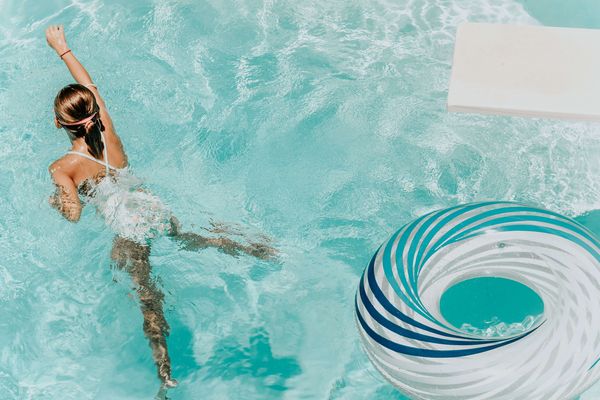What can I do about bladder weakness?
Urinary incontinence still carries a strong stigma in our society. The ability to control the bladder is a milestone in a child's development.

Bladder weakness – what exactly is that?
People who no longer completely have this control often isolate themselves, out of shame, by foregoing familiar activities such as visits to the theatre, sporting activities or even travel.
Numerous people are affected
In Germany alone, an estimated 5-6 million men and women are affected by urinary incontinence:
In addition to this, experts suspect a high number of unreported cases, because many people are afraid to talk to their doctor about this problem, or because they believe bladder weakness is a normal sign of old age.
Types of urinary incontinence and their symptoms
Urinary incontinence can have different causes and is therefore divided into different types.
Overactive bladder/urge incontinence
An overactive bladder/urge incontinence is characterised by various symptoms:
sudden, very strong and uncontrolled urge to urinate, which may or may not be associated with urine loss
frequent urination often with only small amounts of urine during the day
frequent urination at night
For many patients, these strong, uncontrolled urgency episodes alone represent a major obstacle to their daily routine.
Urgency urinary incontinence is a bladder storage disorder. The bladder muscle contracts involuntarily, even if the bladder is filled only to a small extent. The uncontrolled (imperative) urge to urinate leads to involuntary urine loss.
Stress incontinence
This type is triggered by a weakness of the pelvic floor muscles, the sphincter muscles and the connective tissue. Sneezing, laughing, coughing or running leads to involuntary loss of urine without previously having had the urge to urinate. Overweight women or men, women who have had multiple births, older people or men after prostate surgery are especially affected by this type.
Mixed urinary incontinence
The symptoms of stress and overactive bladder/urgency urinary incontinence are present to varying degrees.
Incontinence with neurogenic detrusor overactivity
Neurogenic detrusor overactivity is the result of damage to the nervous system caused by diseases, accidents or congenital malformations. Accidents involving trauma to the spinal cord are the main cause of the acquired disorders. Damage to the nervous system disturbs the interaction of all nerves and organs involved in urine storage and emptying. Those affected no longer have any control over the emptying of the bladder and usually do not feel any urge to urinate.
Overflow incontinence
Overflow incontinence is also referred to as incontinence with chronic urinary retention. It is characterised by urine dribbling without any noticeable urge to urinate. The reasons for this can include problems emptying the bladder, (e.g., benign prostate enlargement), or diminished function of the bladder muscle (e.g., with neurological diseases). Although the bladder is full, the person cannot empty the bladder completely when urinating. Residual urine remains in the bladder.
Extraurethral incontinence
This is characterised by involuntary loss of urine through channels other than the urethra. These can be congenital or caused by injury (e.g., bladder fistula). The storage function and closure mechanism of the urinary bladder are not affected.
Diagnosis of bladder weakness
Due to the different types of urinary incontinence, medical diagnosis is a basic prerequisite for successful therapy. Diagnosis help to clarify which type of urinary incontinence the patient is suffering from and which factors may be able to influence the disease.
The majority of urinary incontinence diseases can be adequately diagnosed only by undergoing a thorough medical check in addition to other simple examinations. The diagnosis of urinary incontinence is divided into basic diagnosis and advanced diagnosis.
Further diagnosis is necessary only if the basic diagnosis gives indications of possible complicating factors or if all therapeutic measures based on the basic diagnosis have not been successful. It is carried out by a specialist and includes the following examinations:
Therapy for bladder weakness
The different types of urinary incontinence require different therapeutic approaches. The therapeutic possibilities for the individual types are listed below.
Therapy for overactive bladder/urge incontinence
In most cases, the overactive bladder is treated with medication using bladder antispasmodics. These calm the bladder muscles and increase the capacity of the bladder.
Therapy for stress incontinence
At the forefront of the therapy are conservative measures to strengthen the pelvic floor muscles, such as pelvic floor exercises, pelvic floor training with vaginal cones, electrical stimulation or vibration therapy. Medication is possible with oestrogens (especially for women experiencing menopause) or with medications that stimulate the closing mechanism of the urinary bladder. In severe cases, surgical methods are indicated, such sling procedure to restore the normal position of bladder and urethra.
Therapy for overflow incontinence
In the event of overflow incontinence due to narrowing of the bladder outlet, the narrowing must be eliminated. This is usually performed by means of an operative intervention (e.g., in the case of a benign prostate enlargement, with a prostate resection). If the overflow incontinence is due to a weak bladder muscle, it is necessary to drain the urine via a catheter. Alternatively or in addition, the bladder muscle can be activated with medication or electrostimulation.
Therapy for neurogenic detrusor hyperactivity
The aim of the therapy is normalisation of the internal bladder pressure using bladder antispasmodics, mostly in combination with catheterisation. As an alternative to this medication, the uncontrolled contractions of the bladder muscle can also be prevented by injecting botulinum toxin type A. If these methods are not successful, surgical measures are indicated, such as urinary diversion through the abdominal wall, bladder enlargement (augmentation) or neuromodulation.
Therapy for mixed urinary incontinence
With this form of urinary incontinence, both the urge and stress components must be treated according to the therapeutic options listed above.
Therapy for extraurethral incontinence
The aim of the therapy is the surgical removal or correction of the malformation or injury.
Prevention of bladder weakness
Unfortunately, precautionary or preventive measures are not possible for most types of urinary incontinence.
One exception is stress urinary incontinence, where certain precautions can be taken by strengthening the pelvic floor muscles and excluding risk factors:
- Avoid being overweight (obesity) by eating a healthy diet and and engaging in physical activity.
- However, avoid sports that can damage the pelvic floor muscles through constant or periodic pressure, such as trampolining.
- With smokers, the constant irritable cough in smokers' bronchitis can cause or worsen stress incontinence and smoking should be stopped.

Where can I find help?
At the German Continence Society (DKG) there are numerous self-help groups where you can find advice and understanding with regard to your complaints. Here you can also find out which doctors offer consultations on urinary incontinence and where you can find pelvic floor and continence centres in your region.
Products for the treatment of overactive bladder/urgency urinary incontinence and neurogenic detrusor hyperactivity
So-called bladder antispasmodics can be used as medication for overactive bladder/urgency urinary incontinence and neurogenic detrusor hyperactivity. These calm the bladder muscles and increase the capacity of the bladder.
Bladder antispasmodics are available on prescription only. Therefore, it is necessary to consult a doctor before beginning this therapy.
Our questionnaire on incontinence
The incontinence questionnaire is used to determine an urge score and a stress score. Based on the evaluation, you can determine a suitable therapy together with your doctor.
Further information for you
Service material on bladder weakness
Frequently asked questions about bladder weakness
Health tips
Promoting overall health can also help treat urological disorders such as bladder weakness and improve overall wellbeing.


